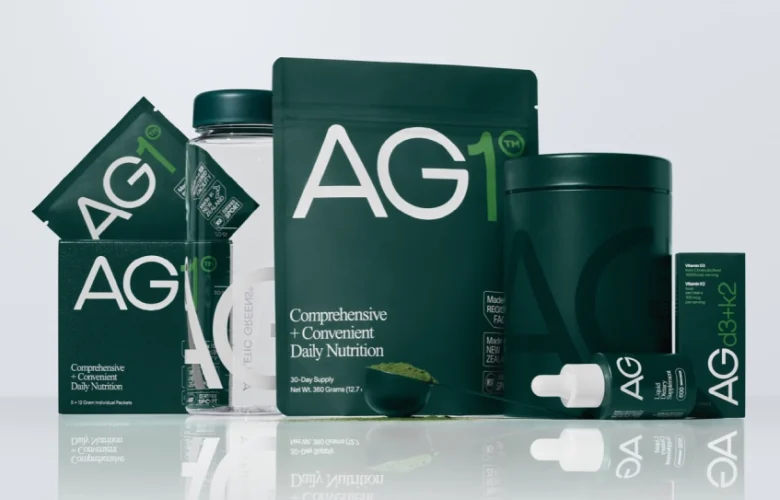Retail is a $5 trillion industry in North America alone and a force that has only continued to show exceptional growth over the years with the advent of online shopping. As a consumer, step into a store and you’re transported into a world full of branded displays, service, and face-to-face interaction with products of interest. Go to a store’s website and (for those brands with a developed understanding of the former) consumers can come to expect much of that same experience translated into a digital format.
The experience that an in-store experience provides is only matched by the convenience of an online experience. The brands that are most successful at building a quality retail strategy are the ones that have a consistent brand across both digital and brick-and mortar. Whether you’re a physical retailer looking to virtualize your shopping experience or an ecommerce brand hoping to open your flagship store, consider how the two avenues work in tandem together rather than at odds. Consider these 7 tips to improving the online shopping experience.
- Invest in Website Appearance and Functionality
First impressions matter. No one wants to arrive at a terrible looking website. And more importantly, with the plethora of competitors across industries at a consumer’s disposal, no one has time to browse a terrible looking website.
As an online brand, your website is your first impression. While the shopper may find you through a variety of different channels, once they arrive, it’s about convincing them to linger through the “racks,” rather than to pass by the window. An underdeveloped mash of pages with unappealing color combinations, poor navigation, and abundance of Comic Sans font is probably not going to encourage potential customers to browse.
In order to avoid a bad first impression, start by investing in the look and feel of your brand as a whole—the logo, color scheme, taglines, and voice. Emphasize the appeal of the homepage with a proper balance of visuals and educational context for whatever your target audience may be. The person browsing may not be in the purchase stage of the customer journey—but rather still in the awareness and consideration stage. Use your website to provide context around your products that these browsers need in order to buy. Depending on your industry, consider including real customer photos, tutorials, recipes, and more.
- Focus on Mobile Responsiveness
With a smartphone in hand, the days of shopping via desktop are being quickly replaced by mobile scrolling. Mobile sales alone for Black Friday and Cyber Monday 2016 topped $1 billion! This trend proves that mobile is here to stay. It’s time that all retailers build our their shopping experience on mobile. Greater access to Internet connections and data packages makes this possible but—as we’ve already learned—not all websites are created equal.
Browsing a website with poor mobile responsiveness can prove incredibly frustrating for consumers and easily lead to cart abandonment. Make sure your business’ website is functional across as many devices as possible, and consider how layouts of all content types will transfer onto smaller screens. For example, a photo of quality size and resolution on desktop may prove less effective when opened in mobile browsing. Be conscious of the devices that customers are operating on so that the experience remains streamlined across the board.
- Be Mindful of Website Speed
A beautiful website that takes ten or more seconds to load is most likely a beautiful website few customers will actually stick around to appreciate. Time is money, possibly more so online, than it is in person. As a general rule of thumb, aim to keep website load time at three seconds or less, to ensure visitors won’t grow impatient and close that window. According to the founder of Just Add Content, Gabriel A. Mays, the “biggest threat [to a business’ website] isn’t a competitor, it’s the back button.”
When incorporating third party applications or displays onto your site, make sure that they do not slow your site down. Their added benefit may not outweigh their added cost if your load time increases.
- Embrace Customer Photos
Giving customer an idea of what a product looks and feels like without being able to actually see and hold it can prove quite challenging online. However, there is one easy solution to replicating this in-store experience online. Customers can get a more authentic idea of what a product is really like by seeing how other real customers are using it. That’s why displaying real customer photos on your ecommerce site is proven to increase sales 2X. This is why strategies built out around social influencers have become so commonplace. Social media influencers are a great way to encourage customers to get posting about your brand on social media. Let your customers open the door for new ones, and utilize their own photos to help build out content across your business’ website.
- Consider Live Chat
The need for service is just as alive online as it is in-store and one of the best things you can provide to customers purchasing online is real-time support. Live chat functionality assures that customers receive answers to any questions or concerns they might have. Give them outlets to ask questions and find answers when they want—just make sure the ends of those outlets are always stocked with an actual individual, or the most accurate information for that given time. Good online support can help to smooth over a customer’s bad ecommerce experience.
- Befriend FREE Shipping
A deciding factor exclusive to online shopping is the cost to deliver. As a business, you have to be conscious of price points that generate profit, but free and discounted shopping options can certainly increase the bottom line. A promo like Amazon’s, for example, which offers free shipping on purchases that total $25 or more, sets the bar for what a customer must spend in order to “save”. Think of it from a customer’s perspective: would you rather get free shipping buy more and receive more items, or would you rather pay for shipping decide against that extra sweater and receive less items? For consumers, the choice is more often than not crystal clear.
- Turn Social Proof Into Trust
Allow online shoppers to engage with your ecommerce site and visualize how to incorporate your products into their everyday lives with the power of social proof. What is social proof? These are the visual and text reviews that customers leave endorsing your products. Platforms like Instagram, YouTube, and Facebook have given brands the ability to collet real visual stories from customers about their products and visual marketing software such as Pixlee allows marketers to display this user generated content on their brand sites.




